What is Data Governance and How Does It Shape Decision-Making?
Data Governance serves as the foundation for managing your organization's data assets. It ensures that data remains accurate, secure, and accessible for proper use. By establishing clear policies and standards, it safeguards data integrity and promotes consistency, which are essential Ingredients of Data Governance. This framework empowers you to make decisions based on reliable information, reducing risks tied to inaccuracies or inconsistencies. With Data Governance, you can trust your data to guide strategic choices, improve operational efficiency, and achieve better outcomes. It transforms data into a valuable asset that drives success and builds confidence across your organization.

Key Takeaways
Data Governance is essential for ensuring data accuracy, security, and accessibility, which are critical for informed decision-making.
Establishing clear policies and standards helps maintain data integrity and compliance, reducing risks associated with inaccuracies.
Implementing a robust Data Governance framework streamlines operations, prevents inefficiencies, and enhances overall organizational performance.
Breaking down data silos fosters collaboration and transparency, allowing teams to access consistent and up-to-date information.
Continuous monitoring and improvement of governance practices are vital to adapt to evolving business needs and technological advancements.
Investing in the right tools and technologies can automate processes, enhance data security, and support compliance with regulations.
Fostering a strong data governance culture within your organization encourages accountability and empowers employees to manage data effectively.
What is Data Governance?
Data Governance refers to the structured approach organizations use to manage their data assets. It ensures that data remains accurate, secure, and accessible throughout its lifecycle. By implementing policies, procedures, and standards, you can maintain the integrity and usability of your data. This framework not only safeguards your data but also ensures compliance with regulations and organizational goals. With Data Governance, you can trust your data to support decision-making and drive business success.
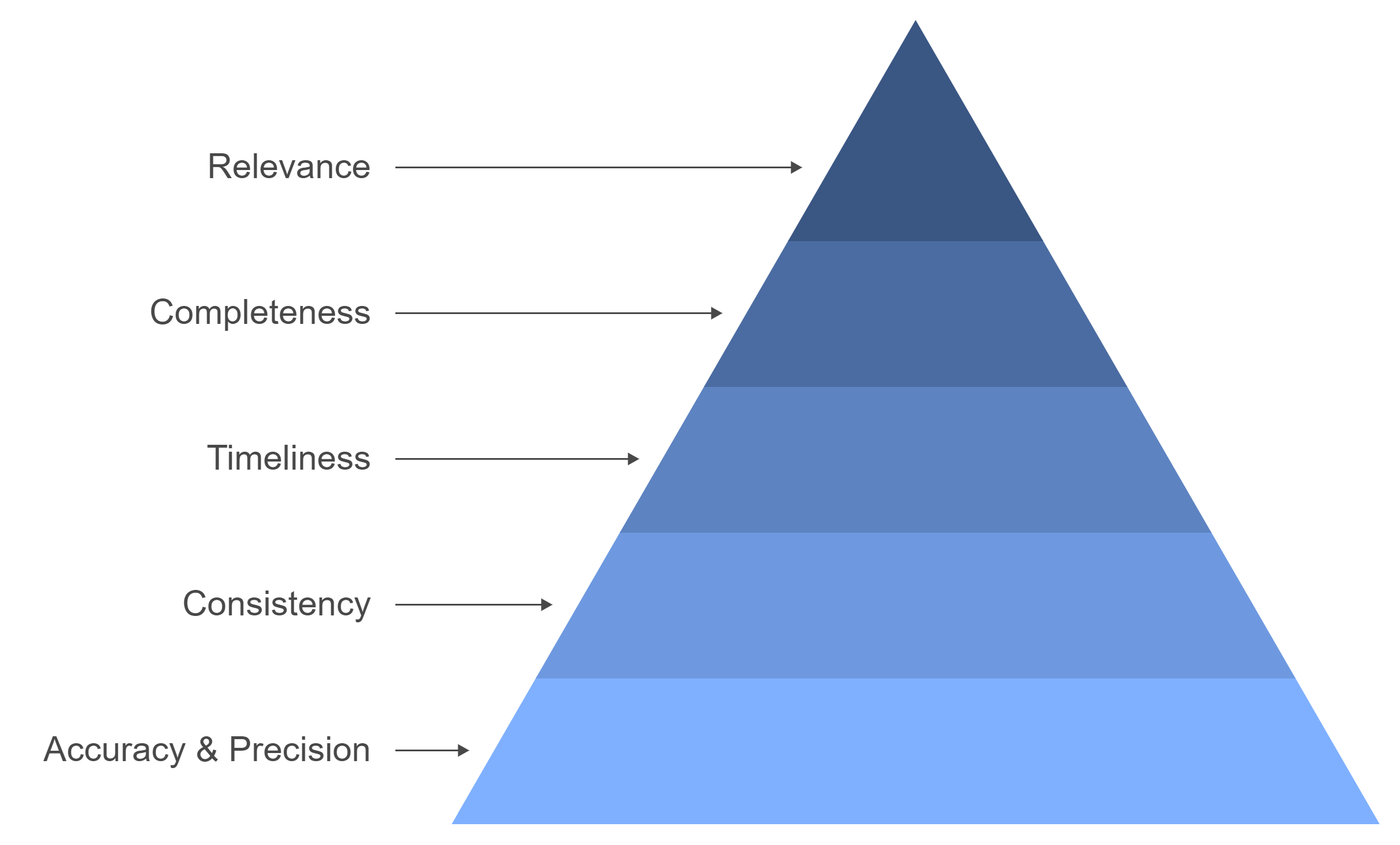
Defining Data Governance
Data Governance establishes the rules and guidelines for managing data within an organization. It focuses on ensuring data availability, usability, and security. By defining who can access data, how it should be used, and under what circumstances, you create a system that promotes consistency and trust. This discipline also addresses data ownership and confidentiality, ensuring that sensitive information remains protected. When you adopt Data Governance, you gain a strategic framework that aligns your data practices with your business objectives.
"Data Governance is the principled management of the data lifecycle — from acquisition to disposal and everything in between."
— Pipeline ZoomInfo
How Data Governance Differs from Data Management
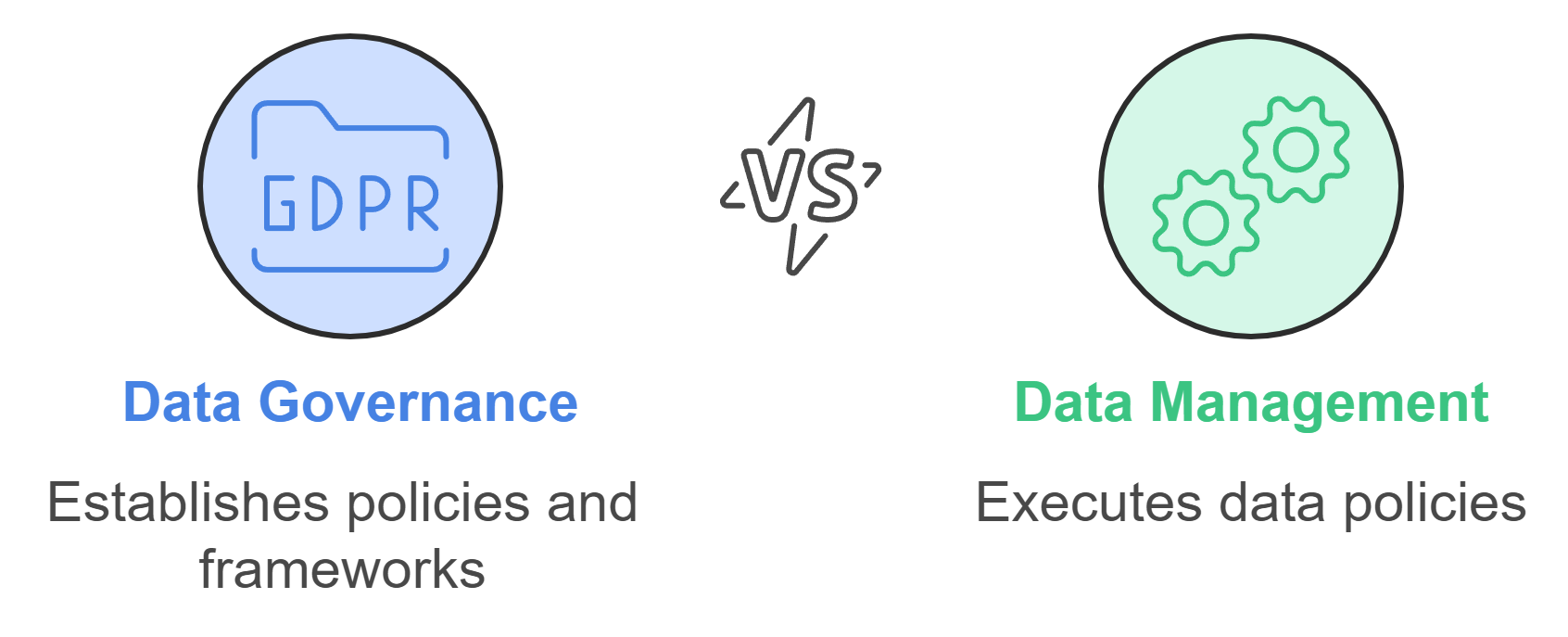
Although Data Governance and Data Management are closely related, they serve distinct purposes. Understanding the difference helps you implement both effectively.
Data Governance: Policies and Frameworks
Data Governance provides the strategic oversight needed to manage data effectively. It defines the policies, standards, and roles that guide how data is handled. For example, it specifies who can access certain datasets and under what conditions. This framework ensures that your data remains consistent, trustworthy, and compliant with regulations. By focusing on governance, you create a foundation for reliable data practices.
Data Management: Operational Execution of Data Policies
Data Management, on the other hand, involves the practical application of the policies set by Data Governance. It includes tasks like collecting, storing, and processing data to meet organizational needs. While governance sets the rules, management ensures those rules are followed. For instance, if Data Governance dictates that only authorized personnel can access customer data, Data Management enforces this by implementing access controls. Together, these disciplines ensure that your data remains a valuable asset.
Why is Data Governance Critical for Organizations?
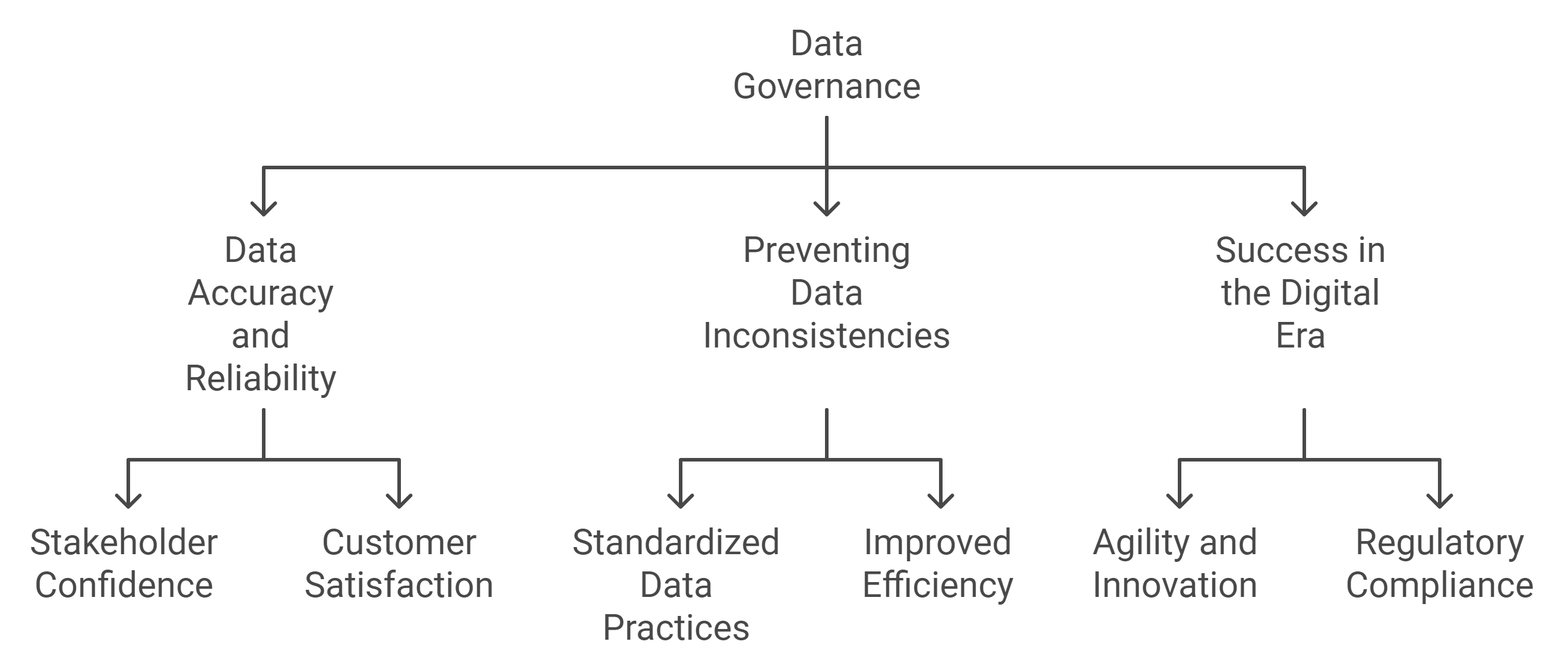
Building Trust Through Data Accuracy and Reliability
Trust forms the backbone of any successful organization. When your data is accurate and reliable, it builds confidence among stakeholders. Data Governance ensures that your data meets high standards of quality by implementing strict policies and procedures. This framework eliminates errors and inconsistencies, allowing you to rely on your data for critical decisions. For example, when customer data is accurate, you can personalize services effectively, enhancing customer satisfaction and loyalty.
Organizations with strong Data Governance frameworks experience fewer risks related to inaccurate data. They avoid the pitfalls of flawed analysis, which often lead to poor decisions. By prioritizing data accuracy, you create a trustworthy environment where stakeholders feel confident in the information they use. This trust not only strengthens internal operations but also enhances your reputation in the market.
Preventing Inefficiencies from Data Inconsistencies
Inconsistent data can disrupt workflows and hinder productivity. Without proper governance, you may encounter duplicate records, conflicting information, or outdated datasets. These issues waste time and resources as teams struggle to reconcile discrepancies. Data Governance addresses these challenges by standardizing data practices across your organization.
When you implement robust Data Governance, you streamline operations and reduce inefficiencies. For instance, standardized data formats and clear ownership rules ensure that everyone accesses the same accurate information. This consistency minimizes errors and accelerates decision-making processes. Organizations with well-implemented governance programs report improved operational efficiency and better resource allocation.
By preventing inefficiencies, you not only save time but also reduce costs. Accurate and consistent data enables you to focus on strategic initiatives rather than fixing avoidable errors. This proactive approach positions your organization for long-term success.
Preparing for Success in the Digital Era
The digital era demands agility and innovation. To thrive in this environment, you need a solid foundation of reliable data. Data Governance equips you to navigate the complexities of digital transformation by ensuring that your data remains secure, compliant, and accessible.
Organizations with robust governance frameworks unlock the full potential of their data. They gain insights that drive innovation, enhance customer experiences, and improve business outcomes. For example, by leveraging governed data, you can identify emerging trends and adapt quickly to market changes. This agility gives you a competitive edge in a rapidly evolving landscape.
Moreover, Data Governance helps you meet regulatory requirements, reducing the risk of penalties and reputational damage. As data volumes grow, having a structured approach becomes even more critical. By preparing for the challenges of the digital era, you position your organization to seize new opportunities and achieve sustainable growth.
How Data Governance Shapes Decision-Making

Ensuring Data Accuracy and Completeness
Accurate and complete data forms the backbone of effective decision-making. When you rely on well-governed data, you can trust its quality and relevance. Data Governance establishes strict standards for data accuracy, ensuring that the information you use is free from errors and inconsistencies. This reliability allows you to make decisions with confidence, knowing that your data reflects the true state of your business.
Incomplete or inaccurate data often leads to flawed analysis and poor outcomes. By implementing a robust Data Governance framework, you can eliminate these risks. For example, when customer data is accurate and complete, you can tailor marketing strategies to meet specific needs, resulting in better engagement and higher returns. With reliable data, you gain the clarity needed to drive your organization forward.
Breaking Down Silos for Accessible Data
Data silos create barriers that prevent teams from accessing critical information. These silos often lead to inefficiencies, as different departments work with fragmented or outdated data. Data Governance helps you break down these silos by promoting data accessibility and collaboration. It ensures that all stakeholders have access to the same accurate and up-to-date information.
When data is accessible, you can foster a culture of transparency and teamwork. For instance, a unified view of sales and customer data enables your marketing and sales teams to align their efforts, improving overall performance. Data Governance also defines clear ownership and accountability, ensuring that data remains consistent across your organization. By removing silos, you empower your teams to work more efficiently and make informed decisions.
Driving Strategic and Informed Decision-Making
Strategic decisions require a solid foundation of reliable data. Data Governance provides this foundation by ensuring that your data is accurate, consistent, and secure. With governed data, you can identify trends, evaluate risks, and seize opportunities with greater precision. This strategic advantage positions your organization for long-term success.
Informed decision-making becomes possible when you trust your data. For example, governed financial data allows you to allocate resources effectively, maximizing returns and minimizing waste. Data Governance also supports compliance with regulations, reducing the risk of penalties and reputational damage. By prioritizing governance, you can transform your data into a strategic asset that drives growth and innovation.
"Mastering Data Governance fosters a culture of trust and reliability, enabling organizations to base decisions on accurate and dependable information."
Key Components of a Data Governance Framework
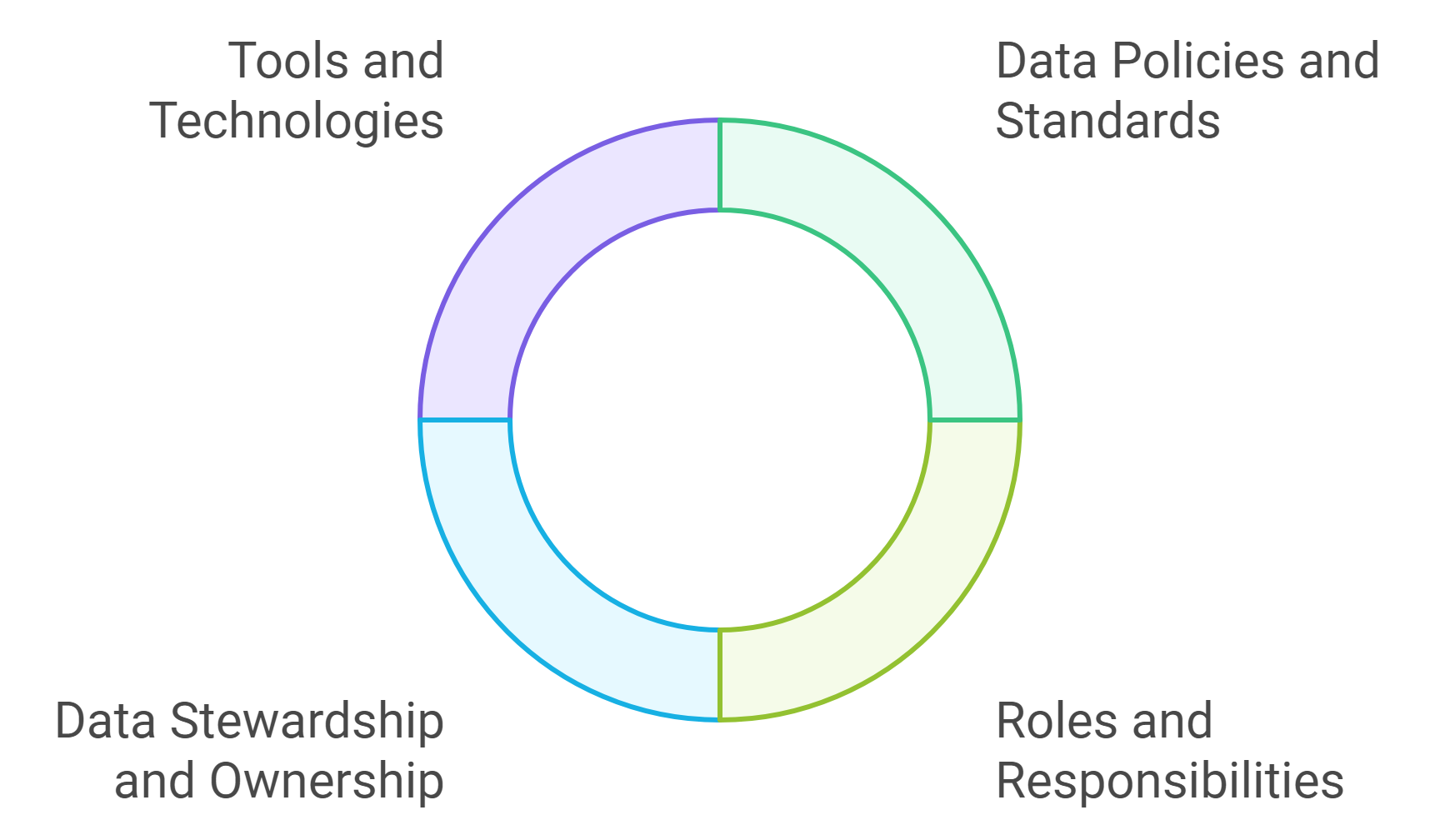
Establishing Data Policies and Standards
Data policies and standards form the backbone of an effective Data Governance framework. These policies define how data should be handled, stored, and shared within your organization. By setting clear guidelines, you ensure consistency and compliance with relevant laws and regulations. For example, policies may specify how to classify sensitive information or outline procedures for data retention and disposal.
Standards, on the other hand, provide measurable criteria to maintain data quality. They help you ensure that data remains accurate, complete, and reliable. For instance, you might establish a standard format for customer records to avoid inconsistencies. Together, policies and standards create a structured approach to managing data, reducing risks, and enhancing trust in your organization's data practices.
"A robust Data Governance framework ensures the availability, accuracy, integrity, and security of information assets."
Defining Roles and Responsibilities
Clear roles and responsibilities are essential for implementing Data Governance effectively. Assigning specific tasks to individuals or teams ensures accountability and prevents confusion. For example, a Data Steward might oversee data quality, while a Data Owner ensures compliance with policies and regulations.
By defining these roles, you create a system where everyone understands their part in managing data. This clarity fosters collaboration and reduces the likelihood of errors. It also helps you address challenges like data silos or inconsistent practices. When roles are well-defined, your organization can operate more efficiently and make better use of its data resources.
Implementing Data Stewardship and Ownership
Data stewardship and ownership play a critical role in maintaining the integrity of your data. Data Stewards act as custodians, ensuring that data complies with established policies and standards. They monitor data quality, resolve issues, and promote best practices across your organization.
Data Owners, on the other hand, hold ultimate responsibility for specific datasets. They make decisions about access, usage, and compliance. For example, a marketing manager might serve as the Data Owner for customer data, ensuring it aligns with privacy regulations.
Implementing stewardship and ownership creates a culture of accountability. It ensures that data remains accurate, secure, and accessible. This approach not only supports regulatory compliance but also enhances decision-making by providing reliable data.
Leveraging Tools and Technologies for Governance
Incorporating tools and technologies into your Data Governance framework enhances efficiency and ensures compliance with data regulations. These solutions automate complex processes, reduce manual effort, and improve the accuracy of your governance practices. By leveraging the right tools, you can streamline operations and maintain control over your data assets.
Modern Data Governance tools offer features that address critical aspects of data management. For instance, data masking protects sensitive information by anonymizing it, ensuring compliance with privacy laws like GDPR or CCPA. Tools with audit trail capabilities track every interaction with your data, providing transparency and accountability. This functionality helps you identify potential risks and ensures adherence to regulatory requirements.
"Data Governance tools not only safeguard sensitive information but also ensure compliance with privacy regulations through automation and policy enforcement."
Policy management is another essential feature of these technologies. It allows you to define, enforce, and monitor data policies across your organization. For example, you can set rules for data retention, access permissions, and usage guidelines. These tools ensure that everyone follows the same standards, reducing inconsistencies and improving data reliability.
When selecting tools, prioritize those that align with your organization's needs. Consider solutions that integrate seamlessly with your existing systems and support scalability as your data grows. Many tools also offer real-time monitoring, enabling you to detect and address issues promptly. This proactive approach minimizes risks and ensures the continuous integrity of your data.
Using technology in Data Governance goes beyond compliance. It enhances decision-making by providing accurate, consistent, and accessible data. With the right tools, you can transform your data into a strategic asset that drives innovation and growth.
Challenges in Implementing Data Governance
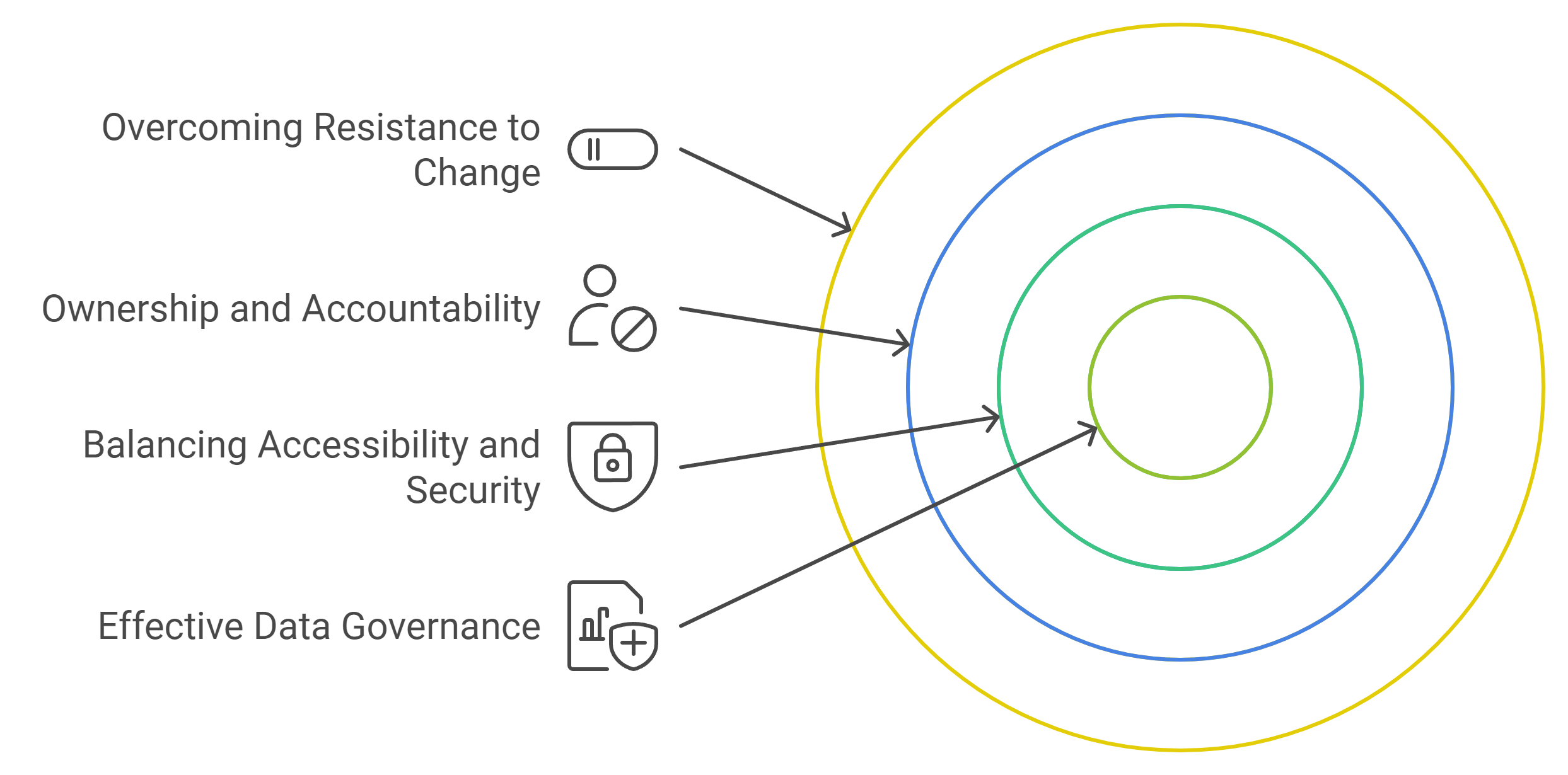
Overcoming Resistance to Change
Resistance to change often becomes a significant hurdle when implementing data governance. Employees may feel apprehensive about new policies or fear that changes could disrupt their workflows. To address this, you need to foster a culture that embraces change and highlights the benefits of data governance. Communicate how these practices improve decision-making, enhance efficiency, and reduce risks.
Providing clear examples can help ease concerns. For instance, tools like Collibra simplify data stewardship and policy management, making governance less intimidating. By showcasing how such platforms streamline processes, you can demonstrate the value of adopting new systems. Additionally, involving employees in the planning phase encourages buy-in and reduces resistance. When they see their input reflected in the framework, they feel more invested in its success.
Addressing Lack of Ownership and Accountability
A lack of ownership and accountability can undermine your data governance efforts. Without clear roles, confusion arises over who manages specific datasets or enforces policies. To overcome this, assign responsibilities to individuals or teams. Define roles such as Data Stewards and Data Owners to ensure accountability.
For example, a Data Steward monitors data quality and resolves issues, while a Data Owner oversees compliance and access permissions. Tools like Informatica support this structure by offering features like data quality monitoring and access controls. These tools help enforce accountability by tracking data usage and ensuring adherence to policies. When everyone understands their role, your organization operates more efficiently and maintains data integrity.
Balancing Data Accessibility with Security
Balancing accessibility and security presents another challenge in data governance. You need to ensure that stakeholders can access the data they need without compromising sensitive information. Striking this balance requires robust policies and advanced tools.
Investing in data management software can help you achieve this balance. These tools enforce policies, track data lineage, and facilitate audits, ensuring that data remains secure yet accessible. Features like data masking protect sensitive information by anonymizing it, while access controls limit who can view or edit specific datasets. By leveraging these technologies, you can maintain security without hindering productivity.
Additionally, educating your team about data security best practices strengthens your governance framework. When employees understand the importance of safeguarding data, they become active participants in maintaining its integrity. Combining education with technology creates a comprehensive approach to balancing accessibility and security.
Solutions to Data Governance Challenges
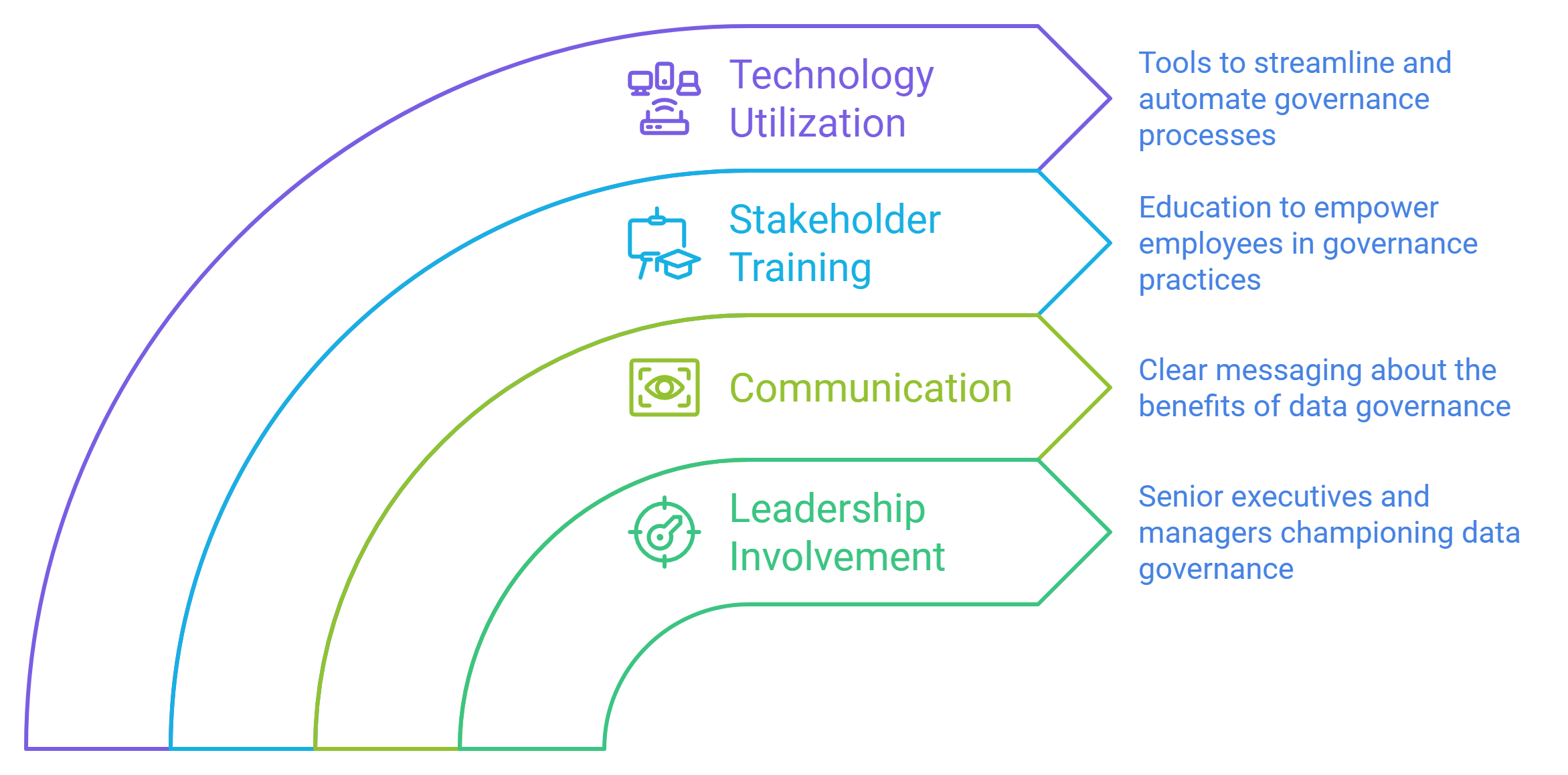
Fostering a Strong Data Governance Culture
Building a strong data governance culture begins with leadership. You need senior executives and business managers to champion the initiative. Their involvement signals the importance of governance to the entire organization. When leaders actively support governance, it becomes easier to align teams and foster collaboration.
A strong culture also requires clear communication. Explain the benefits of data governance to your team. Highlight how it improves decision-making, reduces risks, and enhances operational efficiency. For example, emphasize how accurate data can prevent costly errors or compliance issues. This understanding motivates employees to adopt governance practices willingly.
Involve all departments in the process. Data governance is not just an IT responsibility. Business units must take ownership of their data. Forming a steering committee with representatives from different teams ensures that everyone has a voice. This approach promotes transparency and builds trust across the organization.
"Data governance used to be seen as an IT problem, but there has been an increasing realization that the IT department doesn't have the authority to set and enforce uniform data standards."
Providing Stakeholder Training and Education
Training and education are essential for overcoming resistance and ensuring successful implementation. Many employees may lack the knowledge needed to follow governance policies effectively. By providing targeted training, you can bridge this gap and empower your team.
Start by assessing the current level of data literacy within your organization. Identify areas where additional education is needed. For instance, some employees might need training on data security best practices, while others may require guidance on data quality standards. Tailor your programs to address these specific needs.
Interactive workshops and hands-on sessions work well for engaging stakeholders. Use real-world examples to demonstrate the impact of poor data governance. For example, show how a single misstep in managing sensitive data can lead to a breach, causing financial losses and reputational damage. These scenarios help employees understand the importance of compliance.
Encourage continuous learning. Data governance is an evolving field, and staying updated is crucial. Provide access to online courses, webinars, and industry resources. When your team stays informed, they can adapt to new challenges and maintain effective governance practices.
Utilizing Technology to Streamline Processes
Technology plays a pivotal role in simplifying data governance. Modern tools automate complex tasks, reducing manual effort and minimizing errors. By leveraging the right solutions, you can streamline processes and ensure compliance with regulations.
Invest in tools that align with your organization's needs. For example, data management software with features like data masking and audit trails enhances security and accountability. These tools protect sensitive information while maintaining transparency. Real-time monitoring capabilities allow you to detect and address issues promptly, ensuring data integrity.
Policy management tools also prove invaluable. They help you define, enforce, and monitor governance policies across your organization. For instance, you can set rules for data retention or access permissions. These tools ensure consistency and reduce the risk of non-compliance.
"Overlooking data governance in the current digital era can lead to a cascade of challenges, from operational inefficiencies to severe legal consequences."
When selecting technology, prioritize scalability. As your data grows, your tools should adapt to meet increasing demands. Choose solutions that integrate seamlessly with existing systems to avoid disruptions. By utilizing technology effectively, you transform data governance from a resource-heavy process into a streamlined operation that drives success.
Actionable Steps to Implement Data Governance
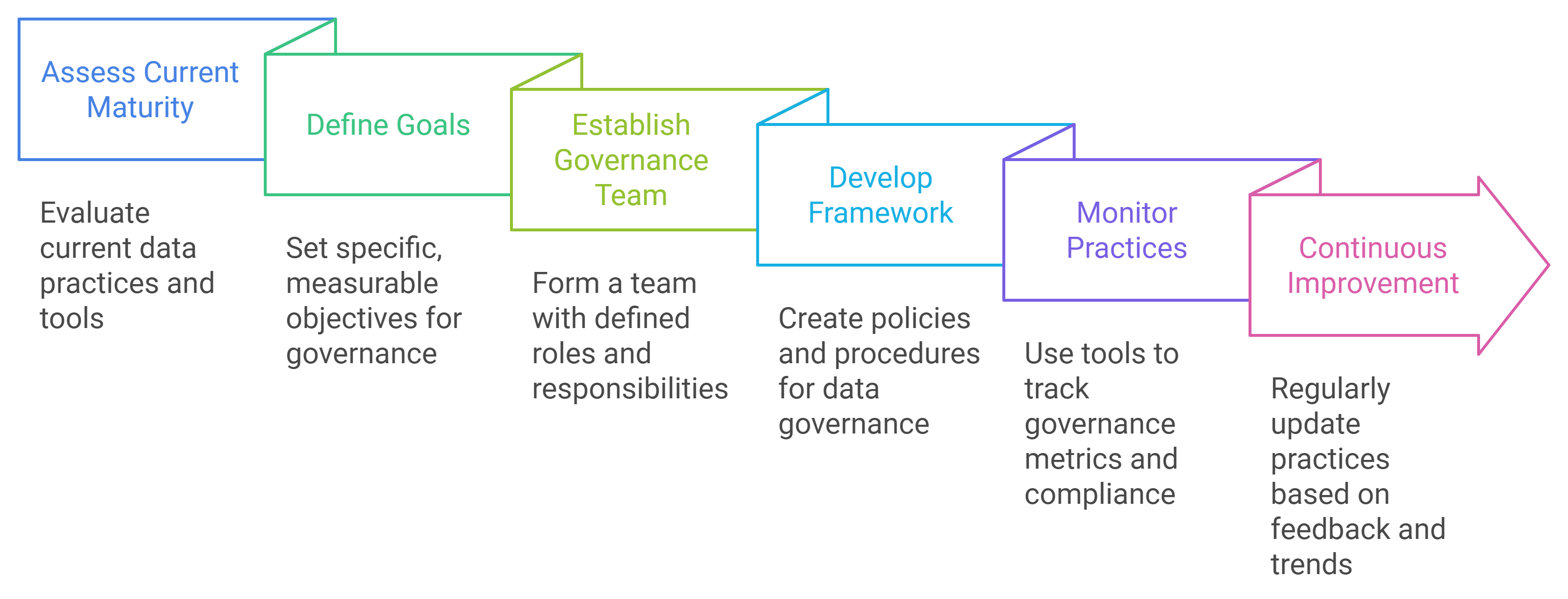
Assessing Current Data Governance Maturity
Understanding where your organization stands is the first step in implementing data governance. You need to evaluate your current practices, policies, and tools. This assessment helps you identify gaps and areas for improvement. Start by reviewing how your organization collects, stores, and uses data. Look for inconsistencies or inefficiencies in these processes.
Create a checklist to guide your evaluation. Include questions like:
Are there clear policies for data access and usage?
Is data quality monitored regularly?
Do employees understand their roles in managing data?
Document your findings to create a baseline. Use this information to measure progress as you implement governance practices. Tools like maturity models can help you categorize your current state. These models often rank organizations from "ad hoc" to "optimized." Knowing your maturity level provides clarity and direction for your governance journey.
"Assessing your data governance maturity is like taking a snapshot of your current state. It reveals strengths and weaknesses, guiding your next steps."
Defining Clear Goals and Objectives
Setting clear goals ensures that your data governance efforts align with your organization's needs. Without defined objectives, it becomes challenging to measure success. Begin by identifying what you want to achieve. For example, you might aim to improve data accuracy, enhance compliance, or streamline decision-making.
Write down specific, measurable, achievable, relevant, and time-bound (SMART) goals. For instance:
Increase data accuracy by 20% within six months.
Ensure 100% compliance with data privacy regulations by the end of the year.
Reduce data retrieval time by 30% in the next quarter.
These goals provide a roadmap for your governance framework. Share them with your team to ensure alignment. When everyone understands the objectives, they can work together more effectively. Regularly review your goals to track progress and make adjustments as needed.
Establishing a Governance Team and Framework
A dedicated team is essential for successful data governance. This team oversees the implementation and ensures adherence to policies. Start by assigning roles such as Data Stewards, Data Owners, and Governance Leads. Each role should have clear responsibilities. For example, Data Stewards focus on maintaining data quality, while Data Owners manage access and compliance.
Form a governance committee with representatives from different departments. This ensures that all perspectives are considered. The committee should meet regularly to discuss progress, address challenges, and update policies. Collaboration across teams fosters a unified approach to governance.
Develop a framework to guide your efforts. This framework should include:
Policies for data access, usage, and security.
Standards for data quality and consistency.
Procedures for monitoring and reporting.
Document the framework and share it with your organization. Use tools like flowcharts or diagrams to make it easy to understand. A well-structured framework provides clarity and ensures that everyone follows the same guidelines.
Monitoring and Continuously Improving Practices
Effective data governance requires ongoing monitoring and refinement. You cannot set policies and expect them to remain effective indefinitely. Regular evaluation ensures that your governance framework adapts to evolving business needs and technological advancements.
Start by establishing a system to monitor your data governance practices. Use tools that track key metrics like data accuracy, compliance rates, and access patterns. These metrics provide insights into the effectiveness of your policies. For example, if you notice a decline in data quality, it may indicate gaps in your processes that need immediate attention.
Create a schedule for periodic reviews. Monthly or quarterly assessments help you identify trends and address issues before they escalate. During these reviews, evaluate whether your policies align with current regulations and organizational goals. If gaps exist, update your framework to close them. This proactive approach minimizes risks and ensures your governance practices remain relevant.
Encourage feedback from your team. Employees who interact with data daily can offer valuable insights into potential challenges or inefficiencies. Use surveys or meetings to gather their input. For instance, if team members report difficulties accessing certain datasets, you can adjust access policies to improve usability without compromising security.
Document all changes to your governance framework. Maintaining a record of updates ensures transparency and accountability. It also helps you track the impact of modifications over time. For example, if you implement a new data quality standard, monitor its effect on decision-making accuracy. This documentation serves as a reference for future improvements.
"Continuous improvement is the cornerstone of effective data governance. Regular monitoring ensures that your framework evolves alongside your organization's needs."
Leverage automation to streamline monitoring efforts. Modern tools can generate real-time reports, flag anomalies, and enforce compliance automatically. For example, automated alerts can notify you of unauthorized access attempts, allowing you to address security breaches promptly. These tools reduce manual effort and enhance the reliability of your governance practices.
Finally, foster a culture of continuous improvement within your organization. Emphasize the importance of adaptability and encourage your team to view governance as an ongoing process rather than a one-time initiative. When everyone commits to refining practices, your organization stays ahead of challenges and maximizes the value of its data assets.
The Future of Data Governance in Decision-Making
Adapting to Emerging Technologies
Emerging technologies like artificial intelligence (AI), machine learning (ML), and blockchain are reshaping how organizations manage and utilize data. To stay competitive, you must adapt your Data Governance practices to align with these advancements. AI and ML, for instance, rely heavily on high-quality data to deliver accurate predictions and insights. Without proper governance, the data feeding these systems may lead to flawed outcomes.
Blockchain technology introduces new challenges and opportunities for Data Governance. Its decentralized nature enhances transparency and security but requires updated policies to manage data ownership and access. By integrating these technologies into your governance framework, you can ensure that your organization remains agile and innovative.
To adapt effectively, start by evaluating how emerging technologies impact your current data practices. Identify gaps in your framework and update policies to address them. For example, if your organization adopts AI, establish guidelines for data quality and bias prevention. Regular training for your team on these technologies ensures they understand their role in maintaining governance standards.
"The integration of emerging technologies into Data Governance frameworks is not optional; it is essential for organizations aiming to thrive in a rapidly evolving digital landscape."
Scaling Governance for Growing Data Needs
As your organization grows, so does the volume and complexity of your data. Scaling your Data Governance framework becomes crucial to manage this expansion effectively. Without scalable governance, you risk losing control over data quality, security, and compliance.
To scale successfully, focus on automation and standardization. Automated tools streamline processes like data classification, quality checks, and access control. These tools reduce manual effort and ensure consistency across your organization. Standardized policies and procedures make it easier to manage data as it grows, providing a clear roadmap for your team.
Engaging stakeholders across departments is another critical step. Collaboration ensures that your governance framework addresses the unique needs of each team while maintaining overall consistency. Regular audits and reviews help you identify areas for improvement and adapt your framework to meet evolving demands.
"Organizations that prioritize scalable Data Governance frameworks position themselves to handle growing data needs without compromising quality or compliance."
Ensuring Long-Term Sustainability of Governance Practices
Sustainability in Data Governance requires a proactive approach. You must continuously monitor and refine your practices to keep pace with changing regulations, technologies, and business goals. A static framework quickly becomes obsolete, leaving your organization vulnerable to risks.
Start by fostering a culture that values data as a strategic asset. When your team understands the importance of governance, they become active participants in maintaining its integrity. Regular training and education ensure that everyone stays informed about best practices and emerging trends.
Investing in robust tools and technologies also supports long-term sustainability. Choose solutions that offer scalability, real-time monitoring, and integration with existing systems. These features help you adapt to changes without disrupting operations.
Finally, document all governance activities and updates. Detailed records provide a reference for future improvements and ensure transparency. Regularly review your framework to identify gaps and implement necessary changes. This iterative process keeps your governance practices relevant and effective.
"Sustainable Data Governance is not a one-time effort; it is an ongoing commitment to excellence in managing your organization's most valuable asset—data."
Data governance strengthens decision-making by ensuring data quality, compliance, and strategic alignment. It provides a structured approach to managing data, enabling you to make informed choices with confidence. Addressing challenges like resistance to change or balancing accessibility with security requires actionable steps and continuous improvement. Start small by assessing your current practices and setting clear goals. Build a roadmap that evolves with your organization’s needs. Regular audits and updates ensure your framework remains effective. By committing to these practices, you unlock the full potential of your data and position your organization for long-term success.
See Also
Understanding Data Governance: Key Principles And Practices
How Data Governance Enhances Overall Data Quality
Data Leadership's Influence On Decision-Making In Organizations
A Comprehensive Guide To Developing A Data Governance Plan
Incorporating Data Leadership Within Corporate Governance Frameworks
